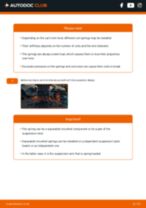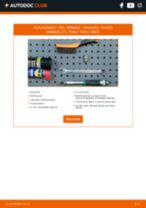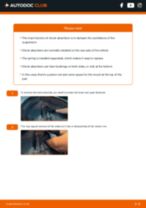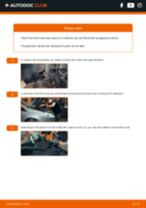Manuals and tips on repair and maintenance for Damping
Damping parts replacement: Step-by-step manuals
Want to get more useful information?  Ask on the forum
Ask on the forum
Ask questions or share your repair experience on the car forum. Subscribe to updates so you don't miss out on new guides.
Damping: replacement and repair guides
Damping: Most viewed car repair video tutorials
Springs
Go to section
 How to change a coil spring on car [AUTODOC TUTORIAL]
How to change a coil spring on car [AUTODOC TUTORIAL] How to change a Front Springs on MERCEDES-BENZ E W210 TUTORIAL | AUTODOC
How to change a Front Springs on MERCEDES-BENZ E W210 TUTORIAL | AUTODOC How to change rear springs on BMW 3 E90 TUTORIAL | AUTODOC
How to change rear springs on BMW 3 E90 TUTORIAL | AUTODOC How to change Rear Springs on OPEL ASTRA H TUTORIAL | AUTODOC
How to change Rear Springs on OPEL ASTRA H TUTORIAL | AUTODOC How to change rear springs / rear coil springs on FORD FOCUS 2 (DA) [TUTORIAL AUTODOC]
How to change rear springs / rear coil springs on FORD FOCUS 2 (DA) [TUTORIAL AUTODOC] How to change front springs / front coil springs on VW GOLF 6 (5K1) [TUTORIAL AUTODOC]
How to change front springs / front coil springs on VW GOLF 6 (5K1) [TUTORIAL AUTODOC] How to change front springs on BMW 3 E90 TUTORIAL | AUTODOC
How to change front springs on BMW 3 E90 TUTORIAL | AUTODOC How to change springs on MERCEDES VITO W639 [TUTORIAL AUTODOC]
How to change springs on MERCEDES VITO W639 [TUTORIAL AUTODOC]
Shock Absorber
Go to section
 Replacing struts on your car [AUTODOC tutorial]
Replacing struts on your car [AUTODOC tutorial] How to change shock absorbers [AUTODOC tutorial]
How to change shock absorbers [AUTODOC tutorial] How to change front shock absorbers on BMW 3 E90 TUTORIAL | AUTODOC
How to change front shock absorbers on BMW 3 E90 TUTORIAL | AUTODOC How to change a front shock absorber on VW GOLF 5 TUTORIAL | AUTODOC
How to change a front shock absorber on VW GOLF 5 TUTORIAL | AUTODOC How to change shock absorbers on a SUZUKI SWIFT 3 – problem-solving [TUTORIAL AUTODOC]
How to change shock absorbers on a SUZUKI SWIFT 3 – problem-solving [TUTORIAL AUTODOC] How to change a front shock strut on VW POLO 5 Saloon [TUTORIAL AUTODOC]
How to change a front shock strut on VW POLO 5 Saloon [TUTORIAL AUTODOC] How to change a front shock strut on MERCEDES-BENZ W203 C-Class [TUTORIAL AUTODOC]
How to change a front shock strut on MERCEDES-BENZ W203 C-Class [TUTORIAL AUTODOC] How to change rear shock absorbers on MERCEDES-BENZ M W163 TUTORIAL | AUTODOC
How to change rear shock absorbers on MERCEDES-BENZ M W163 TUTORIAL | AUTODOC
Damping: Top repair guides
Springs
Go to section
Shock Absorber
Go to section
Lifehacks from AUTODOC CLUB
 DIY manual gearbox restoration | Drivetrain restoration – Part 3
DIY manual gearbox restoration | Drivetrain restoration – Part 3 How to remove rust | AUTODOC tips
How to remove rust | AUTODOC tips Why does it burn oil? The main cause of oil consumption in EA888 Gen 1
Why does it burn oil? The main cause of oil consumption in EA888 Gen 1 Stop Rust Before It Starts: Top 5 Tips for Car Body Protection | AUTODOC Insights
Stop Rust Before It Starts: Top 5 Tips for Car Body Protection | AUTODOC Insights
Unlock your car maintenance assistant!
Track expenses, manage logs, schedule replacements, and more.
Common questions about checking and repairing the suspension damping system
AUTODOC's car repair and service guides

Time to replace parts? Get even better deals in our Shop app.

SCAN ME




























